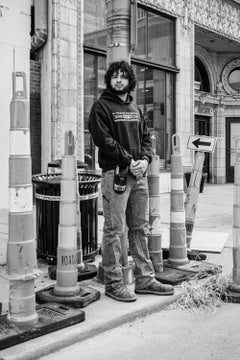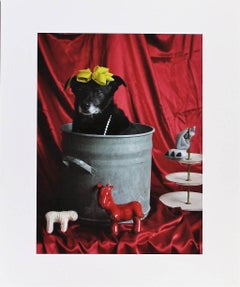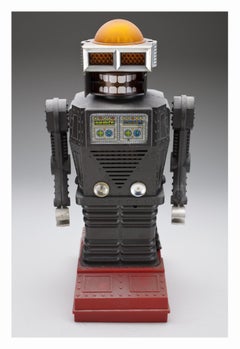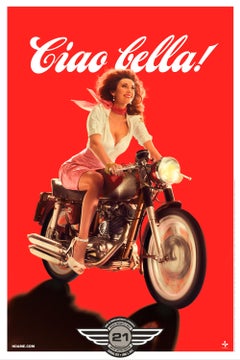Missouri - Portrait Photography
2010s Contemporary Missouri - Portrait Photography
Archival Pigment
2010s Contemporary Missouri - Portrait Photography
Archival Paper, Photographic Paper
2010s Contemporary Missouri - Portrait Photography
Archival Paper, Archival Pigment
2010s Modern Missouri - Portrait Photography
C Print
2010s Contemporary Missouri - Portrait Photography
Archival Pigment
2010s Contemporary Missouri - Portrait Photography
Archival Ink, Archival Paper, Photographic Paper, Archival Pigment
2010s Contemporary Missouri - Portrait Photography
Archival Pigment
2010s Contemporary Missouri - Portrait Photography
Archival Pigment
2010s Contemporary Missouri - Portrait Photography
Archival Pigment
2010s Contemporary Missouri - Portrait Photography
Archival Pigment
2010s Contemporary Missouri - Portrait Photography
Archival Pigment
2010s Outsider Art Missouri - Portrait Photography
C Print
2010s Modern Missouri - Portrait Photography
C Print
2010s Modern Missouri - Portrait Photography
C Print
2010s Contemporary Missouri - Portrait Photography
Archival Ink, Archival Paper, Photographic Paper, Archival Pigment
2010s Contemporary Missouri - Portrait Photography
Archival Ink, Archival Paper, Photographic Paper, Archival Pigment
1940s Modern Missouri - Portrait Photography
Photographic Paper
2010s Contemporary Missouri - Portrait Photography
Archival Ink, Archival Paper, Photographic Paper, Archival Pigment
2010s Contemporary Missouri - Portrait Photography
Archival Ink, Archival Paper, Photographic Paper, Archival Pigment
2010s Contemporary Missouri - Portrait Photography
Archival Ink, Archival Paper, Photographic Paper, Archival Pigment
2010s Contemporary Missouri - Portrait Photography
Archival Ink, Archival Paper, Photographic Paper, Archival Pigment
2010s Contemporary Missouri - Portrait Photography
Archival Ink, Archival Paper, Photographic Paper, Archival Pigment
2010s Street Art Missouri - Portrait Photography
C Print
2010s Outsider Art Missouri - Portrait Photography
C Print
2010s Pop Art Missouri - Portrait Photography
C Print
2010s Contemporary Missouri - Portrait Photography
Archival Pigment
2010s Contemporary Missouri - Portrait Photography
Metal
2010s Modern Missouri - Portrait Photography
Metal
2010s Modern Missouri - Portrait Photography
Archival Pigment
2010s Modern Missouri - Portrait Photography
Archival Pigment
2010s Contemporary Missouri - Portrait Photography
Archival Pigment
2010s Contemporary Missouri - Portrait Photography
Archival Pigment
2010s Contemporary Missouri - Portrait Photography
Archival Pigment
2010s Contemporary Missouri - Portrait Photography
Archival Pigment
2010s Contemporary Missouri - Portrait Photography
Archival Pigment
2010s Contemporary Missouri - Portrait Photography
Archival Pigment
2010s Contemporary Missouri - Portrait Photography
Archival Pigment
Early 2000s Missouri - Portrait Photography
Wood, Lambda
2010s Contemporary Missouri - Portrait Photography
Photographic Paper, Archival Pigment
2010s Contemporary Missouri - Portrait Photography
Archival Ink, Archival Paper, Photographic Paper, Archival Pigment
2010s Contemporary Missouri - Portrait Photography
Archival Ink, Archival Paper, Photographic Paper, Archival Pigment
2010s Contemporary Missouri - Portrait Photography
Archival Ink, Archival Paper, Photographic Paper, Archival Pigment
2010s Contemporary Missouri - Portrait Photography
Archival Ink, Archival Paper, Photographic Paper, Archival Pigment
2010s Contemporary Missouri - Portrait Photography
Archival Ink, Archival Paper, Photographic Paper, Archival Pigment
2010s Contemporary Missouri - Portrait Photography
Archival Ink, Archival Paper, Photographic Paper, Archival Pigment
2010s Contemporary Missouri - Portrait Photography
Archival Ink, Archival Paper, Photographic Paper, Archival Pigment
2010s Contemporary Missouri - Portrait Photography
Archival Ink, Archival Paper, Photographic Paper, Archival Pigment
2010s Contemporary Missouri - Portrait Photography
Archival Ink, Archival Paper, Photographic Paper, Archival Pigment
2010s Contemporary Missouri - Portrait Photography
Archival Ink, Archival Paper, Photographic Paper, Archival Pigment
2010s Contemporary Missouri - Portrait Photography
Archival Ink, Archival Paper, Photographic Paper, Archival Pigment
2010s Contemporary Missouri - Portrait Photography
Archival Ink, Archival Paper, Photographic Paper, Archival Pigment
2010s Contemporary Missouri - Portrait Photography
Archival Ink, Archival Paper, Photographic Paper, Archival Pigment
2010s Contemporary Missouri - Portrait Photography
Archival Ink, Archival Paper, Photographic Paper, Archival Pigment
1950s Modern Missouri - Portrait Photography
Archival Paper, Archival Pigment
2010s Contemporary Missouri - Portrait Photography
C Print
2010s Modern Missouri - Portrait Photography
C Print
2010s Contemporary Missouri - Portrait Photography
Archival Paper, Photographic Paper
2010s Contemporary Missouri - Portrait Photography
Archival Paper, Photographic Paper
Early 2000s Missouri - Portrait Photography
C Print
2010s Contemporary Missouri - Portrait Photography
Acrylic, Archival Pigment
Read More
This Week-Old Calf Named Bug Is One of Randal Ford’s Most Adorable Models
In a recent collection of animal portraits, he brings fashion photography to the farm.
11 of Annie Leibovitz’s Most Talked-About Photographs
See why the famed photographer's celebrity portraits have graced magazine covers and become headline grabbers in their own right for five decades and counting.
Queen Elizabeth’s Life in Photos
She was one of the most photographed women in history, but the world’s longest-reigning queen remained something of a mystery throughout her decades on the throne.
Photographer to Know: William Klein
The noted lensman brought a bold sense of irony to fashion photography in the 1950s and '60s, transforming the industry. But his work in street photography, documentary filmmaking and abstract art is just as striking.
Chris Levine’s Portrait of a Shut-Eyed Queen Elizabeth Sparkles with Crystals
Celebrate the queen's Platinum Jubilee with a glittering, Pop-art version of the most famous and thought-provoking photo of Her Royal Majesty.
In Milan, La DoubleJ Celebrates Women of Design through Portraiture
During Salone del Mobile, Robyn Lea photographed some of the most powerful creative forces in the European design industry, decked out in J.J. Martin’s maximal fashion line.
Lori Grinker’s Artful Photographs of a Young Mike Tyson Are a Knockout!
The New York photographer tells us how an encounter with the then-13-year-old boxer led to a decade-long project that saw them both go pro.
John Dolan’s Photographs Capture the Art and Soul of a Wedding Day
In a new book compiling 30 years' worth of images, the photographer reveals that it's the in-between moments that make a wedding special.




